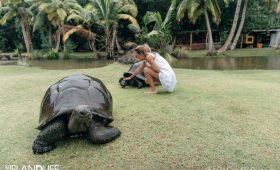About the Tomb of Askia
Discover the Tomb of Askia, a UNESCO World Heritage site in Mali that offers a window into the rich history of the Songhai Empire. This site is not only a significant cultural landmark but also a testament to the architectural and historical legacy of one of West Africa’s most influential empires.
History and Significance
The Tomb of Askia was constructed in the late 15th century to honor Askia Mohammed, the first emperor of the Askia dynasty. Known for his leadership and vision, Askia Mohammed expanded the Songhai Empire and established a thriving society. His commitment to Islam was profound, and after his pilgrimage to Mecca in 1495, he returned with materials to construct his tomb, symbolizing both his faith and his empire’s grandeur.
The tomb itself is a striking example of the fusion between Islamic and local architectural styles. Its design includes elements such as geometric patterns and towering structures, reflecting the craftsmanship and cultural influences of the time. Although Askia Mohammed is the only individual buried within the tomb, several other members of the Askia dynasty are interred in the surrounding courtyard.
Best Time to Visit
For an optimal experience, plan your visit during Mali’s dry season, from November to February. During these months, the weather is cooler and more comfortable for travel. The rainy season, from June to September, can present challenges due to heavy rains and high humidity, which may affect travel conditions and overall enjoyment.
Getting There
The Tomb of Askia is located in Gao, northeastern Mali. The most convenient way to reach Gao is by flying into Gao International Airport, which connects to major cities in Mali and neighboring countries. Once in Gao, you can hire a local guide or taxi to take you to the tomb, situated about 5 kilometers from the town center. Arranging transportation in advance is advisable for a smooth journey.
Local Transportation
While exploring Gao, you have several transportation options. Taxis and car rentals are readily available, and fares can be negotiated with drivers. For a more immersive experience, consider renting a bicycle or motorcycle to navigate the town’s narrow streets and gain a closer look at local life. Alternatively, minibusses, known as “bush taxis,” offer an affordable way to travel, though they can be crowded.
Exploring the Tomb of Askia
Visiting the Tomb of Askia offers a profound glimpse into the past. The site is divided into several sections, each with its own historical significance.
The Courtyard
The journey begins in the courtyard, where the tomb’s architectural details and towering structures immediately capture your attention. The courtyard also contains the graves of other Askia rulers, adding to the site’s historical depth.
The Main Chamber
Inside the main chamber, you’ll find murals and inscriptions that celebrate the life and achievements of Askia Mohammed. These artworks provide insight into the cultural heritage of the region and the artistic skills of the era’s craftsmen.
The Crypt
Descending into the crypt, you’ll encounter the final resting place of Askia Mohammed. This dimly lit chamber holds spiritual significance and invites reflection on the legacy of this influential leader. Visitors often leave offerings as a sign of respect, underscoring the enduring impact of Askia Mohammed’s rule.
Practical Tips for Your Visit
- Wear comfortable shoes for walking and exploring the site.
- Bring a hat, sunscreen, and insect repellent to protect against the sun and insects.
- Dress modestly and respect local customs and traditions.
- Capture the site’s beauty with a camera, but be mindful of any restrictions on photography.
- Engage with the local community to learn more about their culture and history. The people of Gao are known for their hospitality.
Conclusion
The Tomb of Askia is a remarkable destination that offers a unique blend of history, culture, and architectural beauty. As you explore this site, you’ll gain a deeper understanding of Mali’s rich heritage and the legacy of the Songhai Empire. Whether you’re a history enthusiast or a curious traveler, the Tomb of Askia provides a meaningful and memorable experience.




